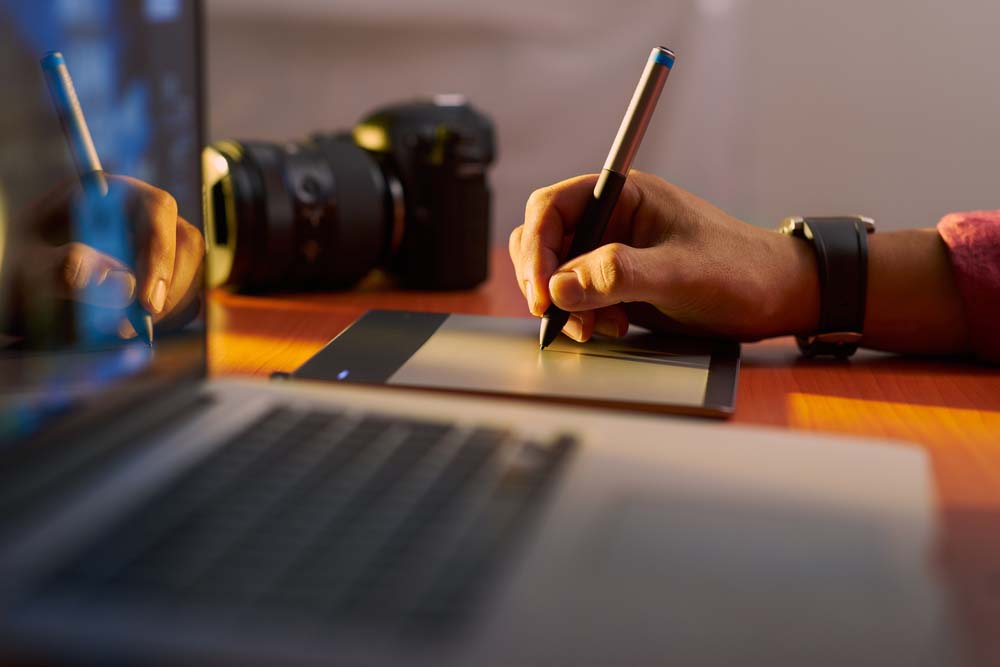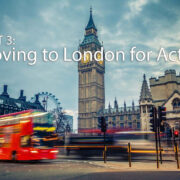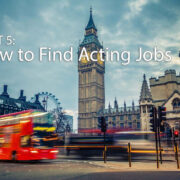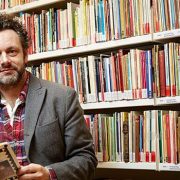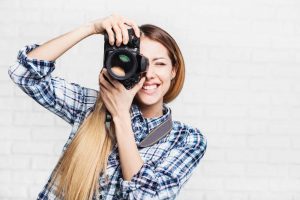 We’ve already discussed how popular self-taped auditions are becoming. Both actors and casting directors prefer this method of auditioning, and are gradually exchanging the traditional method of auditioning people in person for convenience of self-tapes.
We’ve already discussed how popular self-taped auditions are becoming. Both actors and casting directors prefer this method of auditioning, and are gradually exchanging the traditional method of auditioning people in person for convenience of self-tapes.
If you decide to start actively looking for alternative ways to find acting jobs and applying for out-of-town gigs, you’ll need a setup for recording at least a half-decent footage. DSLR cameras are getting cheaper by the day, but you need to know how to choose a DSLR camera that will work for you.
The problem is that there are too many choices of best DSLR cameras you can buy online; some are expensive, and some are pretty cheap. Either way, it’s hard to pick. The key is to find the best value for the price and get a DSLR camera that will last you for a long time, help you record self-tapes and maybe allow to shoot a short film of your own.
Thanks to rapid advancements of technology, a DSLR camera isn’t just a photo camera anymore – you can make amazing quality videos too, and this is why DSLRs are becoming the most popular choice among aspiring actors and filmmakers alike. There are many great brands that could be considered best DSLR cameras, with Canon being a favorite for many, and Nikon and Sony as close seconds.
If you’re totally new to self-taping auditions and video recording at home, or shooting your own short film, then hopefully this quick guide on how to choose a DSLR camera will help you get a better idea as to what you should be looking out for.
How to Choose a DSLR Camera for Self-Taping Auditions
1. Pay attention to DSLR camera’s sensors
In the most basic sense, the bigger the sensor of your DSLR camera, the wider an area you can cover.
DSLR cameras come with two choices: you can either go for a full frame or an APS-C. The full frame option has the bigger sensor and so the area you can cover will be wider, which is wider than the APS-C option. And even if the sensor is small on your DSLR, you can still widen the area it will cover by purchasing a wide angle lens – this will then enable you to cover a larger area.
- Read more on this: Camera sensor size: Why does it matter?
2. The lenses of small sensor cameras won’t work on large sensor cameras
This is an important point to make as you cannot use a lens with a small sensor on a large sensor camera. However, you can use the lenses from a large sensor DSLR camera on a camera with small sensors.
There is a great choice of small DSLR lenses available. Just remember that if you start off with a small sensor DSLR camera and then you later upgrade to a large sensor camera, you won’t be able to use the same lenses.
You will have to purchase new lenses to fit the large sensor camera.
- Read more on this: How Do I Pick the Right Lens for My DSLR?
3. Large sensors offer better subject focus
If you are thinking about choosing a camera with a large sensor then you’ll be pleased to know that they produce sharper videos and really do focus on the subject, which is important for you self-taping auditions. It’s also a perfect choice if you’re planning on using your new DSLR camera to record YouTube videos, such as vlogs or sketches.
Another great point I’d like to mention is that with a large sensor DSLR camera you will get a better depth of field. This will enable you to have a blurred background. Depth of field matters because it determines how sharp the subject and the background are going to look in the video being filmed.
For example, a shallow depth of field means that the background has been blurred out, but you can still see the subject clearly. This is particularly if you decide to film your own short films, and maybe even for your YouTube comedy sketches.
Read more on this: Sensor Size, Perspective and Depth of Field
4. Filming in low light
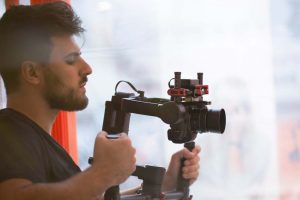 If you are planning on using your DSLR mainly indoors for self-taping yourself (or vlogging), then your best option is a full frame DSLR camera because these shoot photos and produce great quality videos better in low light. The reason being is because they allow even more light to enter into the camera.
If you are planning on using your DSLR mainly indoors for self-taping yourself (or vlogging), then your best option is a full frame DSLR camera because these shoot photos and produce great quality videos better in low light. The reason being is because they allow even more light to enter into the camera.
You will be able to record your videos without the worry of appearing too dark or having to purchase a whole lot of lighting equipment for your home self-tape audition setup. It wouldn’t be a good investment if you went for the other option and then discovered it’s not the right one for you.
So needless to say, before you purchase a DSLR camera, think about where you are going to be using it the most and if you’re going to be filming mainly self-tapes at home (then obviously go for the full frame option), or you want to expand and try to work on your short films, sketches, and other projects.
Read more on this: Strategies to Shoot Video in Low Light
5. Image Stabilization
You may have already noticed that there are many cameras widely available that offer IOS for creating still pictures, but if you want your DSLR for creating great looking self-tapes then you will need to find one that offers stability. This applies to filming shorts as well.
There’s plenty of DSLR camera brands that do offer this option, ensuring that image stability is at the top of the checklist. You may not think this way now, but this option is actually important and will make a massive difference to the quality of the videos you are producing. Sony has been known as the leading brand of DSLR cameras with great image stability options.
Read more on this: Digital SLR Image Stabilization
6. Portability
The best thing about DSLRs is that they are very lightweight and portable when compared with an HD camcorder. HD camcorders used to be a very common choice among actors who used it for self-taping their auditions as well as YouTube vloggers and aspiring filmmakers.
However, DSLRs are slowly putting manufacturers of HD camcorders out of business. Many small DSLR cameras weigh less so that it’s easier to hold by hand. Naturally, there are very powerful DSLRs that are heavier, so make sure you try a few out (or check their weight online) so that you find one that’s the most comfortable for you to hold.
That is if portability is important to you. But if your goal is to only record self-tape auditions, or even if you decide to start filming your own short films or sketches, then you’ll need to get a tripod and portability of a DSLR camera should be one of the least of your concerns.
Read more on this: What Specs Really Matter in a DSLR?
7. ISO range
Check out the DSLR ISO range, as the more ISO choices you have available the more you will be able tweak the light sensitivity on your DSLR. This will enable you to create quality videos.
ISO on DSLRs is a complicated matter that needs more explanation, so I recommend reading more articles on ISO range and why it matters to you regardless of whether you’re trying to be a filmmaker or just an actor recording a self-tape.
Read more on this: Understanding ISO Sensitivity
8. Recording time
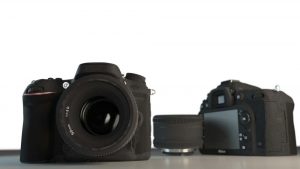 With some DSLR cameras, there is a time limit when it comes to recording. Depending on which brand and camera you buy, some will only record for thirty minutes (or around that time frame).
With some DSLR cameras, there is a time limit when it comes to recording. Depending on which brand and camera you buy, some will only record for thirty minutes (or around that time frame).
Again, if your goal is to only record self-tapes, then this shouldn’t be a problem. Choose a DSLR camera without worrying about time frames, and you’ll be able to save quite a bit of money. You can even use these for recording short films, as there’s rarely a time when you’ll do a 30 minute take.
Read more on this: Why Digital Cameras Have a 30 Minute Video Recording Limit
9. Focus assist
This is a very useful feature and some DSLRs do offer it. Focus assist feature on cameras will help your DSLRs to stay focused on the subject being filmed (you when recording a self-tape audition) and there will be no loss of quality either.
Make sure you find some more information on what focus assist is and how to use it for when you want to do a self-tape. It can be a very helpful feature for actors recording self-tapes, so I recommend buying a DSLR camera that comes with it.
Read more on this: Focus Assist: Necessity or Crutch?
10. Flip out screen
This is a very useful feature and is highly recommended if you’re planning on using your DSLR for self-taping your auditions, creating vlogs or comedy sketch videos on YouTube for instance.
The flip out screen on DSLR cameras enables you to do low shots, and you will be able to see yourself as you are being filmed. When recording a self-tape audition, simply turn it around and see how you stand in frame. When you don’t have a reader with you, a flip out screen on a DSLR is priceless.
Watch more on this: No Flip-Out Screen? No Problem!
11. Slow motion
Some DSLRs offer slow motion, which will enable you to produce videos that are in slow motion. Look out for this if you think it’s something you may need your DSLR to offer, but honestly, if self-tapes and even filming shorts is the only thing you want to do, then this feature isn’t needed.
Slow motion on DSLR would require for the camera to be really powerful, too, and record at higher frame rates. This increases the cost of DSLR by huge amount, so do take a minute to consider whether this is something you truly need.
Read more on this: How Does Slow-Motion Video Work & How Can I Shoot It?
12. The price
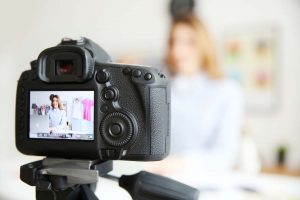 Obviously the more features you want on your DSLR camera, the more expensive it will get. Have a budget in mind and try not to go over it; usually, there’s always plenty of offers for DSLR cameras and you can also take advantage of used or refurbished items.
Obviously the more features you want on your DSLR camera, the more expensive it will get. Have a budget in mind and try not to go over it; usually, there’s always plenty of offers for DSLR cameras and you can also take advantage of used or refurbished items.
If self-taping auditions, YouTube videos and vlogging is what you want to do with a DSLR, then you should be able to get all the necessary features for this at a decent price. Think about all the options you know you’re definitely going to need and then work from there.
DSLR cameras can be a good investment, and even though there’s always a new camera coming out almost every month, yours will serve you for years. There’s no need to upgrade to 4k, 8k, and so on every year. Self-tapes and vlogging have low production value, thankfully.
Final thoughts
Hopefully this guide on how to choose a DSLR camera will help you a little withchoosing the best DSLR for personal video recording. As you can see, there are plenty of aspects to consider before you dive in and purchase one. The main thing is to make sure you are getting what you want at a price you can afford.
Actors want to act, naturally, but recording and filmmaking is an integral part of this process. If you can get a cheap DSLR camera and start learning these skills of filming, learning about cameras themselves, you’ll better understand blocking, the whole process, why a director does one thing or another. This will benefit your acting career.
On top of that, filmmaking – be it just self-taping auditions, recording short vlogs, doing a simple short film or sketches for YouTube – is fun as long as you’re truly passionate about film. And when you have the right DSLR camera to help you produce high quality videos, the process can also be simple and easy.

